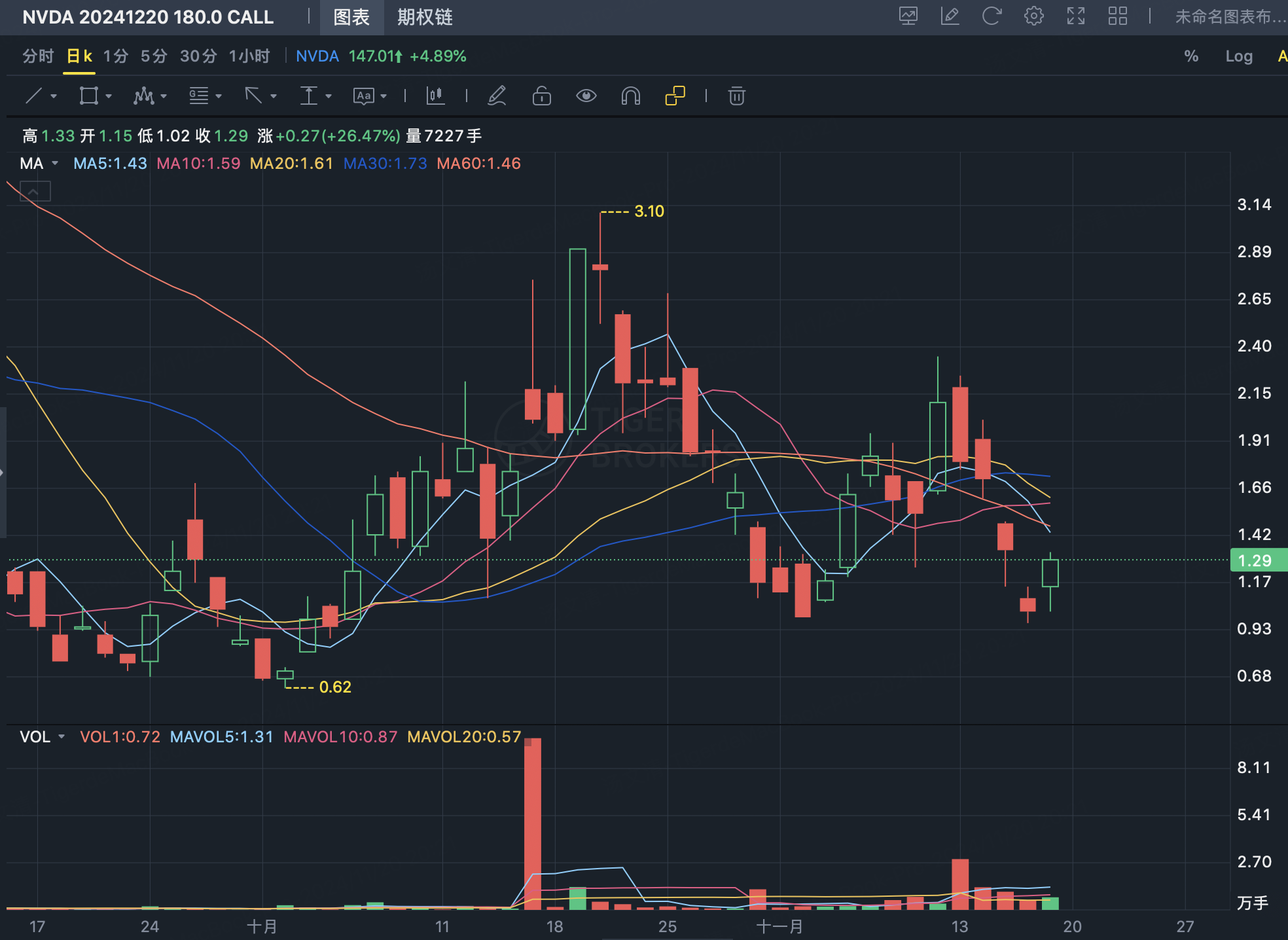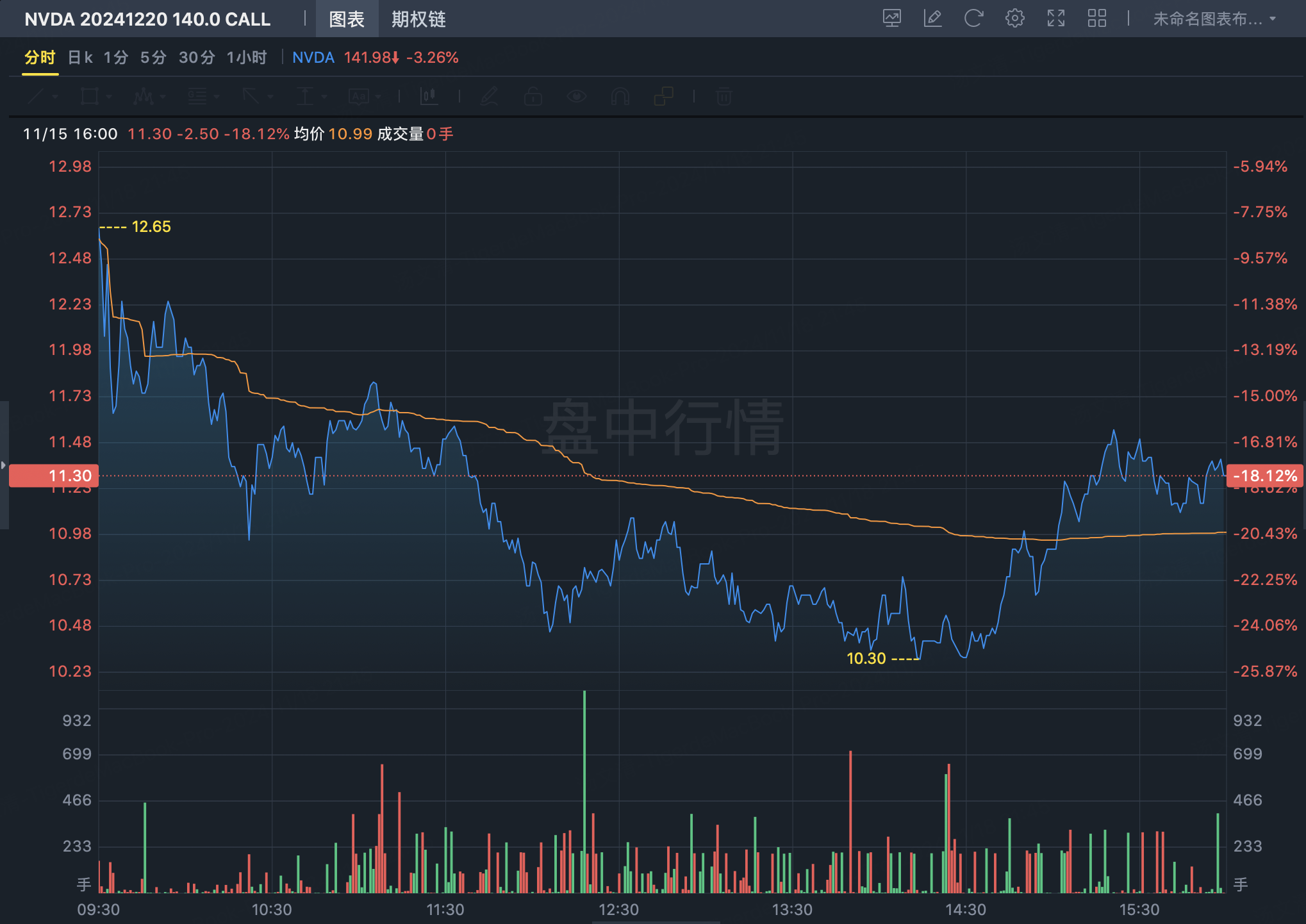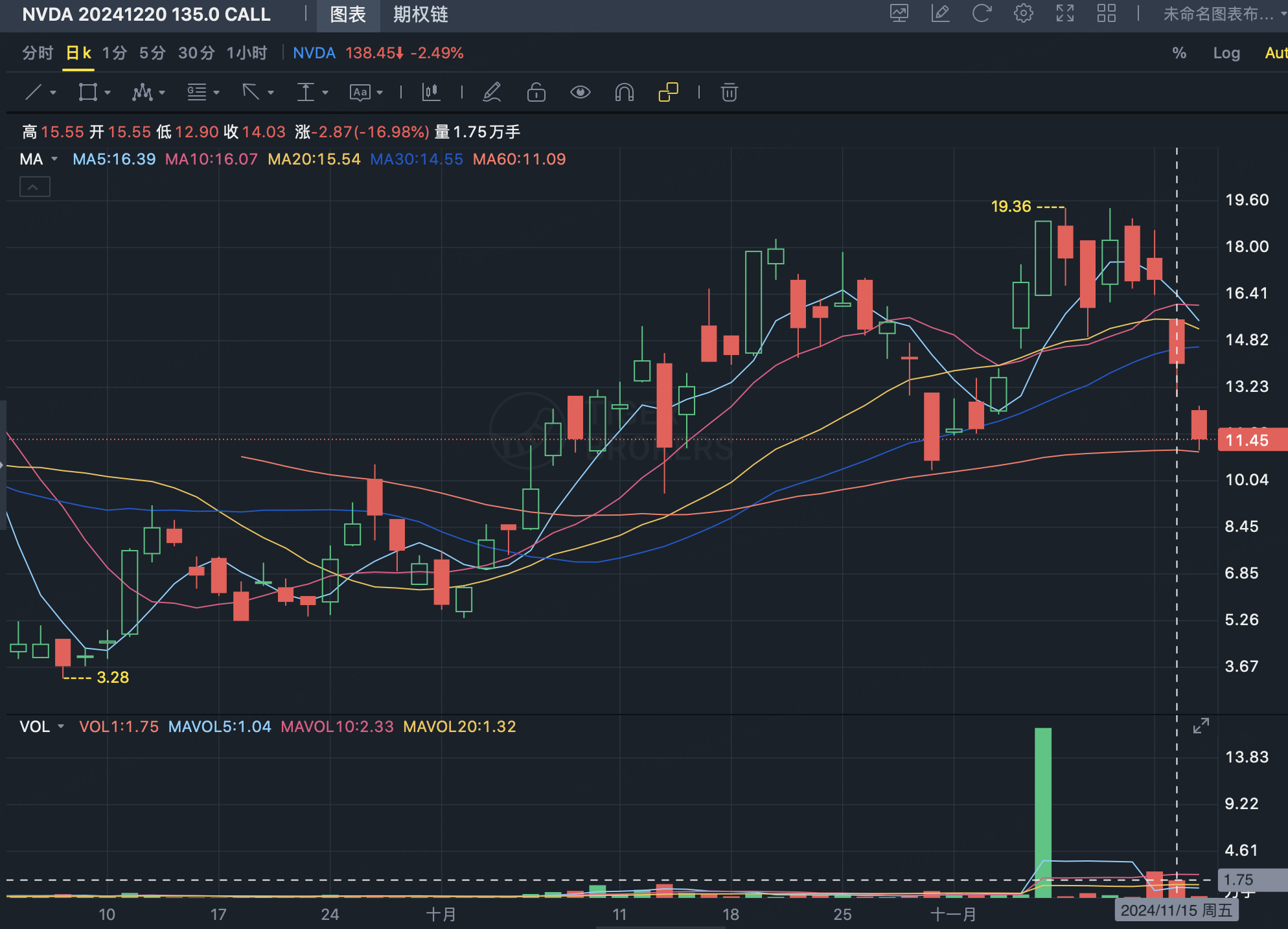Nvidia Q3 Earnings Options Flow Roundup
$Nvidia (NVDA)$ is set to report Q3 earnings after the close on Wednesday. According to Bloomberg analyst estimates, Nvidia's Q3 revenue is expected to be $33.125 billion, adjusted net income of $18.493 billion, and adjusted EPS of $0.739.
Whether it can rally big after earnings depends on if revenue can exceed $2 billion over expectations again, and if the Q4 revenue guidance can also surpass projections.
Based on open interest data, large option traders seem positioned more bullishly, with $150 appearing as a key breakout level for these earnings.
Impacted by the stock pullback, earnings flows have been relatively cautious. Here's a roundup of the major option trades over the past few days for reference.
There may be some looking for that perfect three-way strategy that minimizes losses, maximizes gains, and covers all directions. I've looked, but those conditions can only satisfy two out of three.
Trader 1: Very Bullish
Buying the Dec 20th $180/$190 call spread in massive size:
Buy $NVDA 20241220 180.0 CALL$
Sell $NVDA 20241220 190.0 CALL$
How massive? They've been accumulating this $180/$190 call spread since October 17th for over 100,000 contracts total. Netting out the $190 call sales, their actual debit is roughly 1/3 of the $180 call price, estimating over $10M in premium paid.
Since the $190 shorts cover vega/theta, this doesn't need $180 to profit - theoretically just an 8%+ rally off the $145 price to above $160 is enough.
Trader 2: Below $150
This is the institutional trader rolling their $150/$162.5 collar weekly:
Sell $NVDA 20241122 150.0 CALL$ 78,300 contracts
Buy $NVDA 20241122 162.5 CALL$ 78,300 contracts
Someone asked why they used $162.5 instead of $160? I checked, and $160 has 72,000 contracts open interest - more likely to be a hot strike and get blown through on a rally.
Trader 3: $140-$150 Range
This trader quietly put on a $140/$150 call spread earlier in the week, possibly closing now that stock is $147:
Buy $NVDA 20241220 140.0 CALL$ 20,000 contracts
Sell $NVDA 20241220 150.0 CALL$ 20,000 contracts
$140 and $150 also show up as two of the highest open interest strikes.
Trader 4: No Cost Play Above $155
Selling $130 puts to finance $155 call debit:
Sell $NVDA 20241206 130.0 PUT$ 5,000 contracts
Buy $NVDA 20241206 155.0 CALL$ 5,000 contracts
Elegant - selling the $130 puts offsets the cost of buying the $155 calls. Max gain if NVDA rallies past $155, no loss between $130-$155, with defined risk below $130.
Trading a 1:1 hedge suggests lack of conviction in a big move.
Trader 5: Bullish Above $155
Longer-dated $155 call debit, selling $120 puts and $175 calls to defray costs:
Sell $NVDA 20250321 120.0 PUT$
Buy $NVDA 20250321 155.0 CALL$
Sell $NVDA 20250321 175.0 CALL$
More robust than the last trade, though I'd opt for a nearer-dated short $175 call.
Trader 6: Bearish Below $135
Buying a strangle seemingly more bearish, expecting a move down to the $125-$135 range:
Sell $NVDA 20241122 125.0 PUT$
Buy $NVDA 20241122 135.0 PUT$
Buy $NVDA 20241122 155.0 CALL$
With weekly expiries, the $135 put will have a higher weighting as it's closest to at-the-money, suggesting an overall bearish lean to this trade.
Trader 7: Bullish Above $150
Bullish for a move above $150 but protected against a catastrophic decline:
Sell $NVDA 20241122 105.0 PUT$
Buy $NVDA 20241122 125.0 PUT$
Buy $NVDA 20241220 150.0 CALL$
Sell $NVDA 20250117 180.0 CALL$
With weekly put sales but longer-dated $150+ call exposure, this trader seems cautiously bullish while guarding against a disaster scenario.
Trader 8: $160+/$124- Strangle
The true degenerate - weekly expiry, using the trick of call strikes inside and put strikes outside to preserve one side if it's a small move:
Buy $NVDA 20241122 140.0 CALL$
Sell $NVDA 20241122 142.0 PUT$ x2
They only make money if we see an extreme up or down move, otherwise one side gets totally wiped.
The $110 put seller from earlier closed their position, not participating in earnings.
Rollers:
There were quite a few bullish flows rolling positions ahead of earnings, suggesting they aren't uber-bullish on this particular report, so are pushing out expirations to reduce time decay. This indecisive stance is a signal itself.
That said, the size does seem uniformly skewed towards longer-term bullish plays targeting $160+.
One block traded out of the $215/$165 calls to roll down into the $160/$190 range:
Close $NVDA 20250321 215.0 CALL$ and $165.0 CALL$
Open $NVDA 20250117 160.0 CALL$ and $20241220 190.0 CALL$
Another rolled from $134 calls to $168 calls, bullish for $160+:
Close $NVDA 20250321 134.0 CALL$
Open $NVDA 20251219 168.0 CALL$
And a third pushed out $160 calls to $170 calls:
Close $NVDA 20241220 160.0 CALL$
Open $NVDA 20250117 170.0 CALL$
Bearish Flow: The $2B Trader Reduces
The ~$200M trader sold 26,000 of their $135 calls on Thursday, and another 17,500 on Friday, leaving ~124,000 contracts remaining in the $NVDA 20241220 135.0 CALL$ position.
Stock Hedges:
On Tuesday, there was a large volatility trade for stock downside protection:
Buy $NVDA 20250117 140.0 PUT$ x1
Buy $NVDA 20250117 98.0 PUT$ x4
Price-wise they could have used a $120 strike for a full delta hedge without leverage, but seems they really didn't want any risk of being put shares by using the $98 strike instead. Different approach than a typical collar.
Summary:
For bullish plays, $150 and $160 appear as the two key upside levels to target.
For bearish plays, $125 seems to be the line in the sand, though most downside positions are leaning more towards a moderate selloff to the $130-$140 range.
Given Nvidia's longer-term uptrend, no need to get too aggressive with outright bearish bets - even if it sells off, these dips tend to get bought.
The safest way to play earnings is definitely selling volatility by selling out-of-the-money options with delta 0.2.
Personally, I maintain a bullish position, choosing to hold shares while selling $NVDA 20241122 120.0 PUT$ and $NVDA 20241122 160.0 CALL$ .
However, after reviewing the open interest data, selling calls at 165 or higher might have been better. With the current stock price at 145, if after-hours trading shows a 10% increase, a gap up at market open is highly probable. But since I've already sold the calls, there's nothing to do now except be decisive about selling puts when necessary.
Disclaimer: Investing carries risk. This is not financial advice. The above content should not be regarded as an offer, recommendation, or solicitation on acquiring or disposing of any financial products, any associated discussions, comments, or posts by author or other users should not be considered as such either. It is solely for general information purpose only, which does not consider your own investment objectives, financial situations or needs. TTM assumes no responsibility or warranty for the accuracy and completeness of the information, investors should do their own research and may seek professional advice before investing.
- KSR·07:44👍LikeReport
- YueShan·00:44Good ⭐️⭐️⭐️LikeReport












